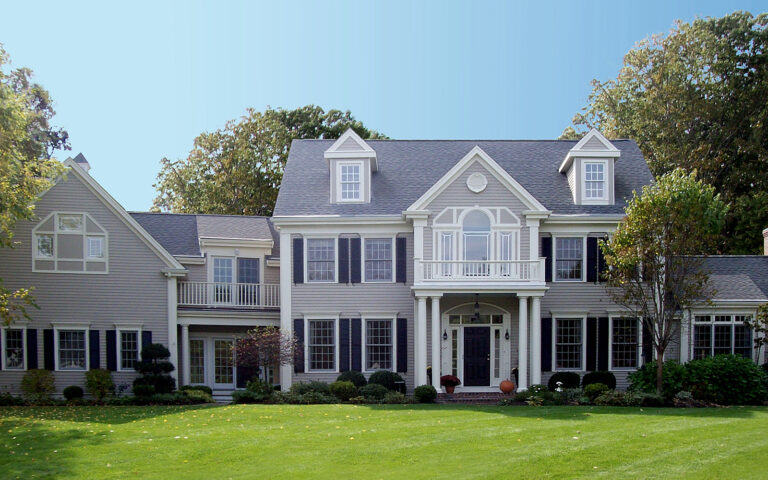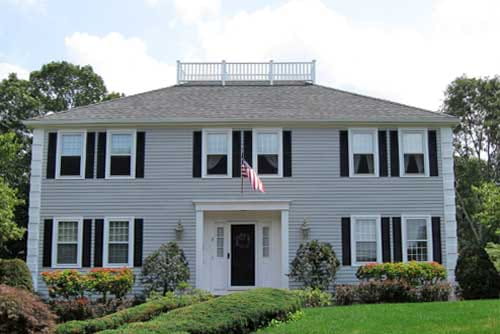What Is the Best Exterior Paint for Wood Homes?
Introduction: Navigating the Paint Dilemma
If you’re living in New England, you know that our weather can be quite a challenge for maintaining the exterior of your wood home. From chilly winters with heavy snow to humid summers and frequent rain, finding the right exterior paint is crucial to keeping your wood home looking great and protected. If you’re seeing signs of peeling, cracking, or you’re just planning a fresh coat, you might be wondering: “What’s the best paint to handle New England’s unpredictable climate, enhance my home’s appearance, and stand the test of time?” You’re not alone in this—many homeowners face these concerns.
At Rhino Shield of New England, we understand the unique challenges that come with maintaining a wood home in our region. Our mission is to help you navigate these choices by providing clear, practical information. By the end of this guide, you’ll be equipped to make a well-informed decision, whether you choose Rhino Shield or another option. Let’s dive into the details.
A Brief History of Exterior Paints: From Oil to Acrylic
In the past, oil-based paints were the go-to for their durability and rich finish. Today, however, water-based acrylic paints are the preferred choice for wood homes, and here’s why. Acrylic paints offer outstanding flexibility, which is crucial since wood expands and contracts with temperature changes. This flexibility minimizes cracking and peeling. Additionally, acrylic paints dry quickly and maintain vibrant colors longer, making them a practical choice for our variable New England weather.
Why Water-Based Acrylic Paints are Ideal for Wood Homes
What makes water-based acrylic paints stand out for your wood home? Let’s break it down:
- Flexibility: Acrylic paints adapt to the movement of the wood, reducing the risk of cracks and damage through seasonal changes.
- Color Retention: These paints are designed to resist fading, even under the strong sun and fluctuating temperatures typical in New England.
- Quick Drying: With faster drying times, you’ll spend less time waiting and more time enjoying your refreshed home.
The Role of Permeability (Breathability) in Exterior Paints
You might think of breathability as something for athletic wear, but it’s also crucial for exterior paints. Breathable paint allows moisture that seeps into the wood to escape as vapor, preventing unsightly blisters and wood rot. However, it’s equally important to have a paint that blocks rainwater. Finding the right balance is essential to keeping your home dry and intact.
This consideration is particularly important for older homes in New England, like historical or Victorian houses. These homes may lack modern vapor barriers and were not built with today’s HVAC systems in mind. At Rhino Shield, we offer a specialized primer designed to address the needs of these older homes.
Environmental and Health Considerations: The Move to Low-VOC Paints
Choosing paint that’s better for your family and the environment is more important than ever. Low-VOC (volatile organic compounds) paints release fewer harmful fumes and have a smaller environmental impact. By opting for low-VOC paint, you’re making a healthier choice for your home and the planet.
Fire Retardant Properties of Exterior Paints
While New England isn’t as prone to wildfires as some other regions, fire retardant paint can still offer an added layer of protection. This type of paint slows the spread of fire, providing extra peace of mind and potentially buying time in the event of a fire.
Spotlight on Rhino Shield: Why It Stands Out
Let’s highlight Rhino Shield and what sets it apart:
- Elastomeric Acrylic: This feature ensures flexibility, allowing the paint to move with the wood and resist cracking.
- Low VOCs: Our paint is easier on the environment and your health.
- Fire Retardant Qualities: Adding an extra layer of safety to your home.
Rhino Shield might not be the right choice for everyone. It’s a more premium option and may not fit every budget. However, if you’re seeking comprehensive protection for your home, Rhino Shield offers features that can address many common concerns.
Choosing the Right Paint for New England’s Climate
Consider your local weather patterns when selecting paint. New England’s climate can be quite varied, with wet winters, humid summers, and everything in between. The paint you choose should be able to handle these fluctuations.
Preparation and Application Tips for Best Results
Preparing your home before painting is key to a successful outcome. Here’s how to get it right:
- Clean Surfaces: Ensure that your wood is clean and free of old paint or dirt for a smooth application.
- Prime Correctly: Use a high-quality primer to help your paint adhere better and last longer.
- Apply Evenly: Apply paint with consistent techniques to avoid streaks and ensure an even finish.
Conclusion: Making the Right Choice for Your Home
Selecting the best exterior paint for your wood home in New England is a significant decision, but with the right information, you can make a choice that suits your needs. Whether you choose Rhino Shield or another option, the key is to ensure you’re protecting and enhancing your home effectively.
If you’re interested in learning more about Rhino Shield’s exterior coating and whether it’s the right fit for your home, click here for a free, no-obligation quote.





0 Comments